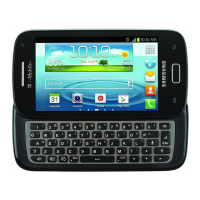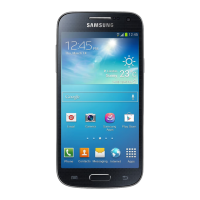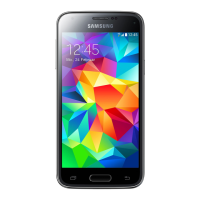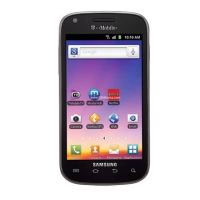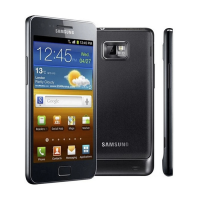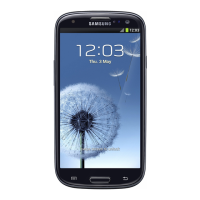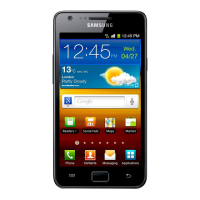
Do you have a question about the Samsung Galaxy S 6 edge and is the answer not in the manual?
| Processor | Exynos 7420 Octa (14 nm) |
|---|---|
| RAM | 3 GB |
| Internal Storage | 32/64/128 GB |
| Front Camera | 5 MP, f/1.9, 22mm (wide) |
| Battery | Non-removable Li-Ion 2600 mAh battery |
| Operating System | Android 5.0.2 (Lollipop), upgradable to 7.0 (Nougat) |
| Dimensions | 142.1 x 70.1 x 7 mm (5.59 x 2.76 x 0.28 in) |
| Weight | 132 g (4.66 oz) |
| SIM | Nano-SIM |
| Colors | White Pearl, Black Sapphire, Gold Platinum, Green Emerald |
| Network | GSM / HSPA / LTE |
| 2G bands | GSM 850 / 900 / 1800 / 1900 |
| 3G bands | HSDPA 850 / 900 / 1900 / 2100 |
| Speed | HSPA 42.2/5.76 Mbps, LTE Cat6 300/50 Mbps |
| Build | Glass front (Gorilla Glass 4), glass back (Gorilla Glass 4), aluminum frame |
| Protection | Corning Gorilla Glass 4 |
| GPU | Mali-T760MP8 |
| Card slot | No |
| Primary Camera Features | LED flash, auto-HDR, panorama |
| Alert types | Vibration; MP3, WAV ringtones |
| Loudspeaker | Yes |
| 3.5mm jack | Yes |
| WLAN | Wi-Fi 802.11 a/b/g/n/ac, dual-band, Wi-Fi Direct, hotspot |
| Bluetooth | 4.1, A2DP, LE, aptX |
| GPS | Yes, with A-GPS, GLONASS, BDS |
| NFC | Yes |
| Infrared port | Yes |
| Radio | No |
| USB | microUSB 2.0, USB On-The-Go |
| Sensors | Fingerprint (front-mounted), accelerometer, gyro, proximity, compass, barometer, heart rate, SpO2 |
| Messaging | SMS(threaded view), MMS, Email, Push Mail, IM |
| Browser | HTML5 |
| Java | No |
| Display | 5.1 inches, Super AMOLED, 1440 x 2560 pixels |
| Rear Camera | 16 MP, f/1.9, 28mm (wide), 1/2.6", 1.12µm, OIS |
| 4G bands | LTE band 1(2100), 2(1900), 3(1800), 4(1700/2100), 5(850), 7(2600), 8(900), 12(700), 17(700), 18(800), 19(800), 20(800), 26(850) |
| Video | 4K@30fps, 1080p@60fps, 720p@120fps, HDR |
| Secondary Camera Features | Dual video call, Auto-HDR |
Explains the purpose and content of the user guide for the Samsung Galaxy S 6 edge.
Instructions on how to charge the phone's battery using an AC adapter or PC connection.
Step-by-step guide on how to power the phone on and off.
Explains basic touch gestures like tap, hold, swipe, drag, flick, and pinch.
Guides on how to activate the new Samsung Galaxy S 6 edge phone.
Details on configuring phone features and preferences during the initial setup process.
Overview of the Home screen and how to access the applications list.
How to access and navigate the phone's settings for customization.
Instructions on how to take screenshots using the phone's buttons or gestures.
Explains features of the Edge screen like lighting, quick reply, and information stream.
Methods for text input, including Samsung Keyboard and Google Voice Typing.
Steps to create or sign in to a Google Account for phone features.
Accessing and downloading apps, books, movies, and music from the Play Store.
How to turn the screen off and on, and unlock it using various methods.
Guidance on checking for and installing software updates for the phone.
How to make and receive phone calls, including in-call options.
Procedures for making emergency calls, even with a locked screen.
Setting up, accessing, and reviewing voicemail messages.
Adding, editing, deleting, and sharing contacts stored on the phone.
How to forward all incoming calls to another phone number.
Steps to compose and send text and multimedia messages.
Instructions for composing and sending emails using the Gmail service.
Setting up, adding, and managing various types of email accounts.
Instructions on using the phone's web browser, including bookmarks and history.
Features and operations for taking pictures and recording videos.
How to connect the phone to a computer to transfer files via USB or Bluetooth.
Turning Wi-Fi on/off, connecting to networks, and using Wi-Fi Direct.
Enabling, pairing, connecting, and sharing information using Bluetooth.
Information on making calls and using data services globally with Sprint.
Monitoring mobile and Wi-Fi data usage, setting limits, and restricting hotspot.
Setting up screen lock methods, security features, and credential storage.
Enabling and managing features for users with vision, hearing, or dexterity impairments.
Backing up phone data and settings, and performing factory data resets.
Selecting language, keyboard settings, and speech input options.
Monitoring battery usage, charge percentage, and configuring power saving modes.
Keeping the phone's software up-to-date with the latest available versions.
